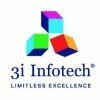
i
NeoSOFT
Filter interviews by
NeoSOFT Interview Questions, Process, and Tips for Freshers
NeoSOFT Interview Experiences for Freshers
18 interviews found
I applied via Naukri.com and was interviewed in Sep 2024. There was 1 interview round.
(6 Questions)
- Q1. Brief about your project ?
- Ans.
Developed a web application for managing inventory and sales for a retail store.
Used Angular framework to create a responsive and user-friendly interface.
Implemented features for adding, updating, and deleting products in the inventory.
Integrated with backend APIs to fetch real-time sales data and generate reports.
Utilized Angular Material for designing consistent UI components.
- Q2. What is angular? what is SPA?
- Ans.
Angular is a popular front-end framework for building web applications. SPA stands for Single Page Application.
Angular is a front-end framework developed by Google for building dynamic web applications.
It uses TypeScript for building applications with components, services, and modules.
SPA is a web application that loads a single HTML page and dynamically updates the content as the user interacts with the app.
SPA provid...
- Q3. What is lazy loading?
- Ans.
Lazy loading is a technique in web development where resources are loaded only when needed, improving performance.
Lazy loading helps reduce initial load time by loading resources on demand
It is commonly used in Angular for loading modules, components, or routes asynchronously
Lazy loading can improve user experience by speeding up page load times
- Q4. What is rxjs? in deep?
- Ans.
RxJS is a library for reactive programming using Observables to handle asynchronous data streams.
RxJS stands for Reactive Extensions for JavaScript.
It allows you to work with asynchronous data streams and handle events.
Operators like map, filter, and mergeMap are used to manipulate and combine streams.
Subscriptions are used to listen to and react to changes in the data streams.
Example: Using RxJS to make HTTP requests
- Q5. Angular and javascript basic question?
- Q6. Difference between ?? and ?:
- Ans.
?? is the nullish coalescing operator, while ? is the optional chaining operator in Angular.
?? is used to provide a default value when a variable is null or undefined.
? is used to safely access nested properties of an object without causing errors.
Example: const name = person?.name; // safe access to 'name' property of 'person' object
Skills evaluated in this interview
Top NeoSOFT Angular Developer Interview Questions and Answers
Angular Developer Interview Questions asked at other Companies
(1 Question)
- Q1. Explain types of testing ,why it is imp
Interview Preparation Tips
horrible rules that one cant think
QA Tester Interview Questions asked at other Companies
(10 Questions)
- Q1. What is hoisting
- Ans.
Hoisting is a JavaScript mechanism where variable and function declarations are moved to the top of their containing scope during compilation.
Variable declarations are hoisted but not their initializations.
Function declarations are fully hoisted, meaning they can be called before they are declared.
Hoisting can lead to unexpected behavior if not understood properly.
- Q2. Name the CSS positions
- Ans.
CSS positions include static, relative, absolute, fixed, and sticky.
Static - default position, elements are positioned according to the normal flow of the document
Relative - positioned relative to its normal position
Absolute - positioned relative to the nearest positioned ancestor
Fixed - positioned relative to the viewport
Sticky - acts like a combination of relative and fixed positioning
- Q3. What are semantic tags
- Ans.
Semantic tags are HTML tags that clearly define the content they contain for better accessibility and SEO.
Semantic tags provide meaning to the content they enclose, making it easier for search engines to understand the structure of the page.
Examples of semantic tags include
, Using semantic tags improves the accessibility of the website for users with disabilities, as screen readers can interp
- Q4. What is promise chaining
- Ans.
Promise chaining is a technique in JavaScript where multiple asynchronous operations are chained together to execute sequentially.
Allows for handling multiple asynchronous operations in a more readable and organized way
Each promise in the chain returns a new promise, allowing for further chaining
Helps avoid callback hell by nesting promises inside each other
Example: promise1.then(result => { return promise2; }).then(re
- Q5. Rest and spread operator
- Q6. What is virtual DOM
- Ans.
Virtual DOM is a lightweight copy of the actual DOM that React uses to improve performance by minimizing direct manipulation of the actual DOM.
Virtual DOM is a concept in React where a lightweight copy of the actual DOM is created and updated in memory.
When changes are made to the virtual DOM, React compares it with the actual DOM and only updates the necessary parts, reducing the number of direct manipulations to the ...
- Q7. Synthetic events in react
- Ans.
Synthetic events in React are events that are normalized by React to ensure consistent behavior across different browsers.
Synthetic events are instances of the SyntheticEvent object in React.
They are cross-browser compatible and have the same interface as native events.
They are used to handle events like onClick, onChange, etc. in React components.
Example:
- Q8. What is redux in react
- Ans.
Redux is a predictable state container for JavaScript apps.
Redux is a state management tool commonly used with React to manage the application's state in a predictable way.
It helps in maintaining a single source of truth for the state of the entire application.
Redux follows a unidirectional data flow, making it easier to understand how data changes over time.
Actions are dispatched to update the state in Redux, and redu...
- Q9. What are hooks in react
- Ans.
Hooks in React are functions that let you use state and other React features without writing a class.
Hooks were introduced in React 16.8.
They allow you to use state and other React features in functional components.
Some commonly used hooks are useState, useEffect, useContext, and useReducer.
- Q10. Difference between useMemo and useCallback
- Ans.
useMemo is used for memoizing values, while useCallback is used for memoizing functions.
useMemo is used to memoize a value and only recompute it when its dependencies change.
useCallback is used to memoize a function instance and only re-create it when its dependencies change.
Example: useMemo can be used to memoize the result of a complex computation, while useCallback can be used to memoize a callback function passed t
Skills evaluated in this interview
Top NeoSOFT React Js Frontend Developer Interview Questions and Answers
React Js Frontend Developer Interview Questions asked at other Companies
(2 Questions)
- Q1. Whats is Denpendency injection?
- Ans.
Dependency injection is a design pattern in which components are given their dependencies rather than creating them internally.
Allows for easier testing by injecting mock dependencies
Promotes loose coupling between components
Improves code reusability and maintainability
Examples: Constructor injection, Setter injection, Interface injection
- Q2. What is middleware
- Ans.
Middleware is software that acts as a bridge between different applications, allowing them to communicate and share data.
Middleware facilitates communication between different software applications
It can handle tasks such as message queuing, data transformation, and security
Examples of middleware include message brokers like RabbitMQ, ESBs like MuleSoft, and API gateways like Kong
Skills evaluated in this interview
Softwaretest Engineer Interview Questions asked at other Companies
NeoSOFT interview questions for popular designations
(1 Question)
- Q1. They asked some core Java Concepts,String,Java 8,SpringBoot Architecture,Stream API code
Top NeoSOFT Java Developer Interview Questions and Answers
Java Developer Interview Questions asked at other Companies
Get interview-ready with Top NeoSOFT Interview Questions
I applied via Approached by Company and was interviewed in Dec 2023. There was 1 interview round.
(10 Questions)
- Q1. What is static in Java?
- Q2. What is singleton?
- Q3. What is Coroutines?
- Q4. What is dispatcher?
- Q5. What is with context in Coroutines?
- Q6. How to raise request parallel in Coroutines?
- Q7. Scoped functions in Kotlin.
- Q8. Background task in Android.
- Q9. What is the difference between interface and abstract class in Java?
- Q10. What is let function?
Android Developer Interview Questions asked at other Companies
Jobs at NeoSOFT
Three DSA questions like Array, Tree, Graph, and sorting algorithms.
Software Engineer Trainee Interview Questions asked at other Companies
(2 Questions)
- Q1. Weak - Strong Difference
- Ans.
Weak - Strong Difference is a common interview question to assess understanding of object-oriented programming concepts.
Weak references do not prevent the referenced object from being deallocated, while strong references do.
Weak references are used to avoid retain cycles in iOS development.
Strong references increase the retain count of an object, keeping it in memory until all strong references are released.
- Q2. Open - Public Difference
- Ans.
In iOS development, 'open' allows access to the class or method from any module, while 'public' restricts access to the current module only.
Open access modifier allows classes and methods to be accessed from any module.
Public access modifier restricts access to the current module only.
Example: 'open class MyClass' can be accessed from any module, while 'public class MyClass' can only be accessed within the current modu
IOS Developer Interview Questions asked at other Companies
(2 Questions)
- Q1. Introduce yourself
- Q2. A coding question
Top NeoSOFT Software Engineer Interview Questions and Answers
Software Engineer Interview Questions asked at other Companies
(2 Questions)
- Q1. Dependency injection
- Q2. Dispose and finalize
- Ans.
Dispose is used to release unmanaged resources, while finalize is used for cleanup before an object is destroyed.
Dispose is called explicitly by the developer, while finalize is called by the garbage collector.
Dispose should be implemented in classes that directly use unmanaged resources like file handles or database connections.
Finalize is used for cleanup tasks like closing files or releasing memory.
Implement IDispos...
Skills evaluated in this interview
Top NeoSOFT DOT NET Developer Interview Questions and Answers
DOT NET Developer Interview Questions asked at other Companies
Top trending discussions






NeoSOFT Interview FAQs
The duration of NeoSOFT interview process can vary, but typically it takes about less than 2 weeks to complete.
Tell us how to improve this page.
NeoSOFT Interviews By Designations
- NeoSOFT Software Engineer Interview Questions
- NeoSOFT Software Developer Interview Questions
- NeoSOFT Senior Software Engineer Interview Questions
- NeoSOFT Java Developer Interview Questions
- NeoSOFT Full Stack Developer Interview Questions
- NeoSOFT PHP Developer Interview Questions
- NeoSOFT Angular Frontend Developer Interview Questions
- NeoSOFT DOT NET Developer Interview Questions
- Show more
Interview Questions for Popular Designations
- Software Engineer Interview Questions
- Software Developer Interview Questions
- Senior Software Engineer Interview Questions
- Java Developer Interview Questions
- Full Stack Developer Interview Questions
- Reactjs Developer Interview Questions
- Angular Frontend Developer Interview Questions
- DOT NET Developer Interview Questions
- Show more
NeoSOFT Interview Process for Freshers
based on 16 interviews
Interview experience
Explore Interview Questions and Answers for Top Skills at NeoSOFT
Interview Questions from Similar Companies
Fast track your campus placements
NeoSOFT Reviews and Ratings
based on 1.5k reviews
Rating in categories
Mumbai,
Mumbai Suburban
+12-4 Yrs
Not Disclosed
|
Software Engineer
2k
salaries
| ₹3.5 L/yr - ₹14 L/yr |
|
Senior Software Engineer
752
salaries
| ₹5.9 L/yr - ₹20 L/yr |
|
Software Developer
702
salaries
| ₹3.6 L/yr - ₹13.7 L/yr |
|
Softwaretest Engineer
483
salaries
| ₹2 L/yr - ₹9.8 L/yr |
|
Associate Software Engineer
190
salaries
| ₹2.5 L/yr - ₹9 L/yr |

ITC Infotech

Test Yantra Software Solutions

Microland

3i Infotech
- Home >
- Interviews >
- NeoSOFT Interview Questions >
- NeoSOFT Interview Questions for Fresher















